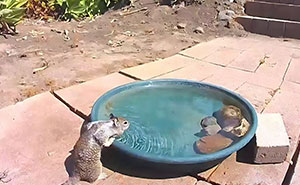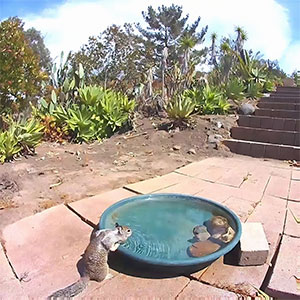Typically, the goal of taxidermy is to create a lifelike representation of the animal, yet some artists aim for more stylized pieces. Usually, the taxidermy is realized by mounting or stuffing the animal’s body. There’s no formal training to become a professional taxidermist. Yet, our interviewee noted that it’s important to study the work specimens before starting. She added “I’d argue that obsessive study of wildlife is part of the magic formula that creates a good piece of taxidermy. The rest, even though cliché, is quite literally, practice makes perfect, and a LOT is learned from making mistakes.” The practice can be traced back to ancient times when it was a custom to preserve trophies of a hunt. Yet, taxidermy as a way of turning animals into art started growing during Enlightenment times. The earliest known mount that exists today is a crocodile hanging from the ceiling of a cathedral in Ponte Nossa, Italy. Its document dates back to 1534, which leads experts to know that it is at least that old. By the early 18th century, chemical means of preserving things such as hair, skin, and feathers made possible attempts to recreate the appearance of living animals. A century later, taxidermy became established as a museum art.
Tow fiber is also used by modern taxidermists and was used in the past for upholstery as well. Its versatility and sustainability make it a great choice for a stuffing material. The only trouble is that it can be quite tricky to get hold of it. Additionally, there’s an option to buy ready-made hard foam bodies. Similarly, the eyes, which typically are glass or acrylic, can also be purchased from taxidermy suppliers. Of course, our list isn’t extensive – each taxidermist has their own materials, techniques, and so on. Yet, as can be seen, some of our mentioned materials have established their place in taxidermy for quite some time now. But that’s far from the truth. In fact, many modern taxidermists are a part of so-called ethical taxidermy. Krysten is one of them. And so, she didn’t shy away from telling us what it is: “Generally speaking, work created under this definition means that no animals were killed for the purpose of taxidermy. The vast majority of specimens are sourced either as roadkill, window strikes, pest control, and from animals that have died in captivity and are treated with the utmost respect upon arrival in the taxidermist’s hands.” Skillfully done ethical taxidermy can be a useful way to preserve the image of threatened or extinct species so future generations can have a visual of creatures that no longer exist. Well, let’s just hope that the images taxidermists are trying to leave for future generations don’t look like those in today’s list because these surely would give the wrong idea about animals nowadays. Well, at least we can laugh about them (or get terrified of them) right now, can’t we?
Follow Bored Panda on Google News! Follow us on Flipboard.com/@boredpanda! Please use high-res photos without watermarks Ooops! Your image is too large, maximum file size is 8 MB.
































































































